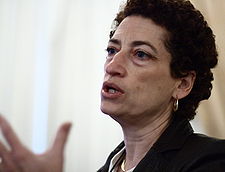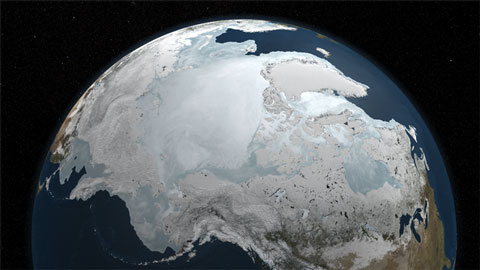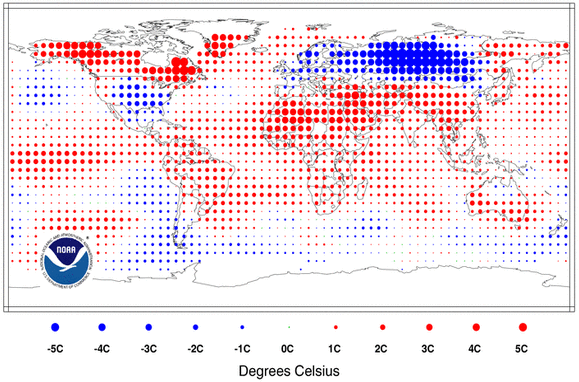 “…we tend to assume that the public are confused because they have a deficit of scientific knowledge, education and cognitive skills. That is to say that they’re scientifically illiterate.”
“…we tend to assume that the public are confused because they have a deficit of scientific knowledge, education and cognitive skills. That is to say that they’re scientifically illiterate.”
In these words science historian Naomi Oreskes, speaking with others at a symposium at the recent American Association for the Advancement of Science (AAAS) meeting, depicts the reaction of most scientists to the puzzling gap between scientific knowledge and public perception of climate change. I might add that although I’m no scientist I share the assumption she describes, since it was reading climate science (at the lay level) which made me aware of the reality of the crisis.
She goes on to critique the response of the scientific community:
“So if the problem is a deficit, then the remedy for it is a surfeit. So it seems to me that the scientific community has succumbed to or fallen into or pursued what I would call a supply side response… we try to supply good information with public outreach efforts…And there are many examples of this, but since we’re here at AAAS, one of my favourites is our AAAS Press Room… If you actually read this web page you find it’s filled with fantastic information, but how many people are going to take the time, how many people in the public even know that we have a AAAS Press Room?”
The supply side model has failed.
“…our message has not gotten through to the American people. In fact a completely different message has gotten through which is that scientists are arguing, that there is still a lot of scientific uncertainty, that more research is needed, and that a lot of what we’re seeing can be explained by natural variability.”
She has tried to understand how this message of uncertainty and doubt is the one that has got through to the public and has found that for the past 30 years the American people have been subject to a very organised and systematic campaign to spread that alternative message. Her forthcoming book, co-authored with Erik Conway, will document the campaign. (The book will be reviewed on Hot Topic.) But in the meantime she offered the symposium an example which the book doesn’t cover.
After the first President Bush signed the UN Framework Convention on Climate Change, Western Fuels, a consortium of coal producers, launched one of many campaigns to challenge the scientific evidence. They did this by hiring a PR firm, a group known as Bracy Williams & Co, and a set of market researchers, Cambridge Reports, to specifically plan a strategy, to test that strategy, and if it were successful, to implement it. The main point of this strategy was to reposition global warming as theory, not fact.
They began with a series of print ads. Oreskes sums up the message of those ads as follows:
“’Who told you the Earth was warming?’ Chicken Little, so there’s your alarmism argument. ‘Some say the Earth is warming, some also said the Earth was flat.’ So scientists are now cast as the opposite, as the anti-science. And ‘How much are you willing to pay for a problem that may not exist?’ That’s an argument that we’ve seen repeatedly over the last 20 years.”
Then they organised public relations tours in combination with this ad campaign
“and a big part of this public relations tour was to get scientists who could appear on TV, so arrange television appearances by sceptical scientists, usually not climate scientists, but people who had what appeared to be relevant credentials.”
Next step was to analyse the results through focus groups, which showed that yes, you could market attitude change. But it worked best if the evidence was presented as facts by technical spokespeople, that is to say people who were scientists or who appeared to be scientists. Therefore that it was essential to recruit scientists to deliver the message.
The scientists were duly found and incorporated into step two of the campaign, the production of a video called The Greening of Planet Earth. Most of them weren’t climate scientists, but mostly actually agronomists from the US Department of Agriculture making the claim that we know for a fact that carbon dioxide increases agricultural productivity, and in fact not just agricultural productivity but productivity of all plants.
“So it’s a very, very positive message, it’s all good, the scientists are all very kindly-looking, they’re very nice, they’re very calm, and they just tell this good news message over and over again.”
In a weird way, Oreskes comments, the opponents of scientific information have been more scientific than the science community. They studied and tested and built on the evidence they gathered from the testing. More scientific, more organised, more aggressive The scientific community meanwhile has relied on peer reviewed journals and websites which are too technical for the general public.
People are not confused, she argues, because they are ignorant of the science. They are confused because people have tried to confuse them. Successfully. The misinformation campaigns get reported in the mass media. The scientists’ responses are made in peer reviewed journals.
What’s to be done? Oreskes raises PR possibilities, but recognises they may not enhance scientific credibility. But at least, she says, since what the scientific community has been doing in the past has clearly not been effective, it might be worth considering some alternatives. Yes indeed, but what?
Oreskes is doing an excellent job of revealing the enormity of what the science has been up against over the past two decades. It certainly isn’t scientific scepticism. But I don’t see any possibility of science matching the kind of organised campaigns that Western Fuels mounted and others have continued. They are highly unethical. They are cynical and manipulative. They have no scientific basis. Those and many other considerations make it impossible for the scientific community to even think of doing battle on that ground. Science is the only weapon the scientists have. Not that they have to confine themselves to peer reviewed papers. These are critical times and it would be good to see more of them entering into the public arena, seeking out journalists, expressing their fears, writing op-eds, badgering editors, publishing books. But when all is said and done it is only the dawning realisation of the seriousness of the science that will tell against the false assurances of the deniers. It seems to me we’re stuck with that.




 Fred Pearce is a fine one to speak of a rush to judgment. Many of his Guardian articles on the UEA emails did just that. (See
Fred Pearce is a fine one to speak of a rush to judgment. Many of his Guardian articles on the UEA emails did just that. (See